Herräng 2025
This post is about swing dancing. I just got back from Herräng Dance Camp: an event in rural Sweden that I attend every year. This post is about my experience this year.
The plan
Herräng has recovered sufficiently from the pandemic that it was able to run for four weeks this year, up from three last year. I attended weeks 2 and 3: from Saturday 12th to Saturday 26th July 2025. I would have liked to go for longer, but I didn't feel it was fair to abandon Stuby for too long, soon after she arrived.
I know from past experience that it is important to go to Herräng with a plan. There is so much going on at all times that you can easily be overwhelmed or exhausted, and stumble around randomly, missing out on things you wish you had done instead. And there is no right answer; different people like different things. So here is my plan for this year.
Week 2 was the Balboa week, and I booked for the Advanced level course, along with my friend Alan who is a keen Balboa dancer. I have attended this same course at various levels for the last three years. It has greatly improved my knowledge of this less-known swing dance. I have been able to help to teach it back in my home town of Cambridge.
Anticipating exhaustion after a week of classes, I booked a Party Pass for week 3, meaning that I don't have to go to any classes and I can choose my timetable freely. I always say I'm going to stay up late and social dance into the early morning. What usually happens instead is that I catch up on sleep, laundry and socialising, bomb around the countryside on my bike, and spend a couple of days with Herräng Flu: the mixture of viruses that inevitably sweeps through the large crowd of people who have converged from the far corners of the world to dance with each other.
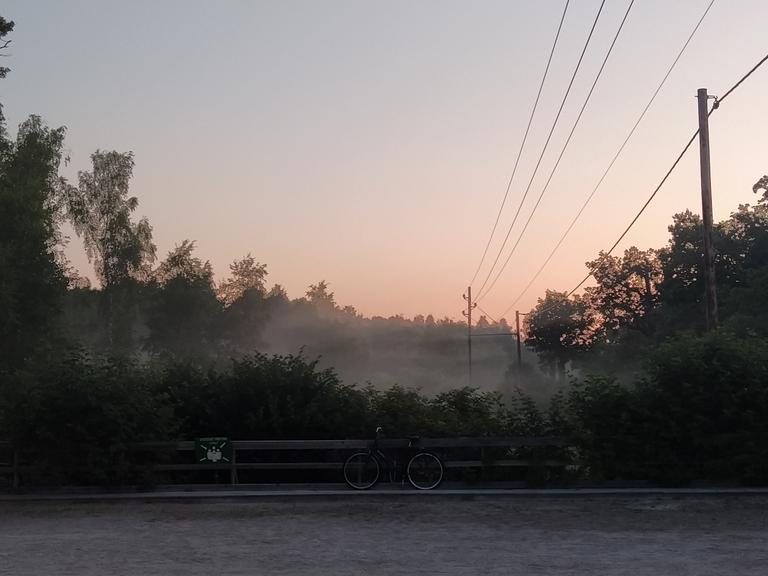
Like last year, I did not book any tap dance classes this year. Herräng is a great place to learn tap dancing, whose history is intimately related to swing music and dancing, although it extends much earlier and later. I have done the tap course several times, but these days I find I benefit plenty from just the daily Tap Jam: a free event where people improvise together. So I planned to go to as many Tap Jams as I could manage.
My other goals included:
-
Teach some taster classes. These classes are a great opportunity for teachers to have a go at teaching at an international level, and for students to learn some whacky things that they might not normally sign up for. They are free, unpaid, and informal. The Camp takes care of the logistics (venue, equipment, timetable, publicity) and the rest is up to the volunteer teachers.
-
Refresh friendships. In particular I wanted to visit Birgitta, a Herräng resident who has hosted me in many previous years. Also, over the years I have met a lot of dancers from all over the world, whom I only ever see at Herräng.
-
Enjoy the weather and long days, and spend some time in the beautiful Swedish countryside.

Accommodation
Alan knows some friends in London through Balboa events, and for week 2 invited me to share a house in the woods with Patrick, Ianthe, Ania, Alison and him. I know Ania and Alison a little, but I was nonetheless the outsider in this social circle. In addition to sharing accommodation, we were all on the same Balboa course. This was a great arrangement both socially and educationally.
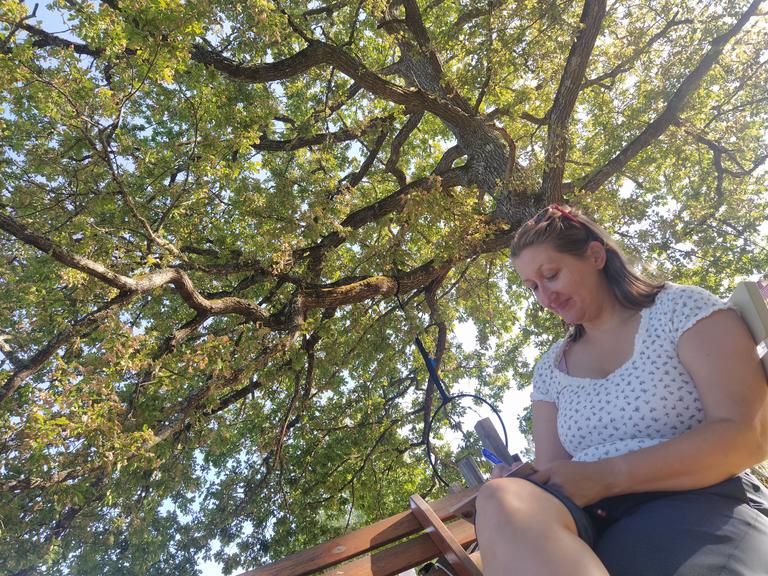
Apart from Alison, who spent the previous week in Stockholm, we all arrived on the same early flight to Arlanda, which was convenient. Ania worked out that a taxi from the airport was cheaper than the Herräng-provided shuttle bus, so we all stumbled together to our new home with our big suitcases and sleep debts. We left our luggage on the doorstep, then the taxi took us to Herräng village to get the key, hire bicycles, register for the lessons, and so on.
The house was beautiful. The garden would happily have accommodated a small flock of children, which in our case we did not have, but Alan at least claimed the trampoline as his office. I was allocated the top of a bunk bed, with Alan in the bottom. Plumbing in the middle of the woods is often exercising, but the one shower and loo proved sufficient for all of us. Typically for a rented holiday home, there were enough bins to satisfy all our waste separation fetishes, though we did not understand where to empty them all to. The kitchen included a fridge, freezer, dishwasher, and coffee machine, and we set about stocking up on the corresponding consumables.
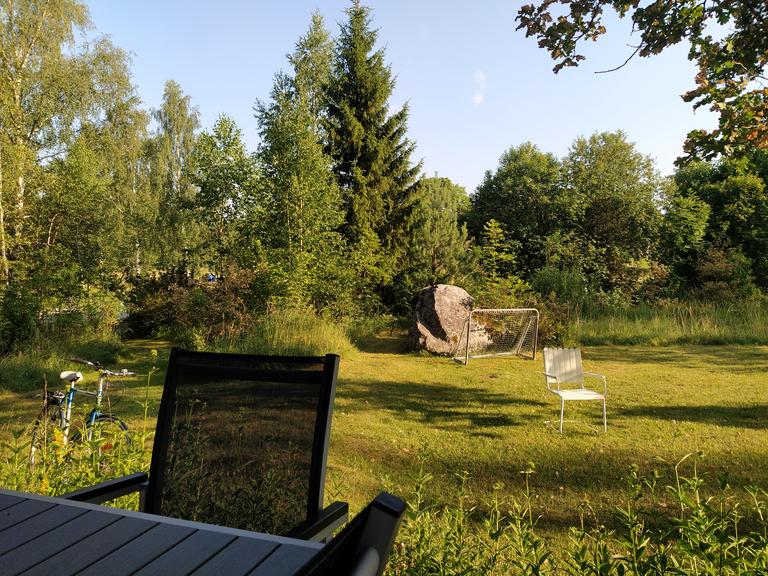

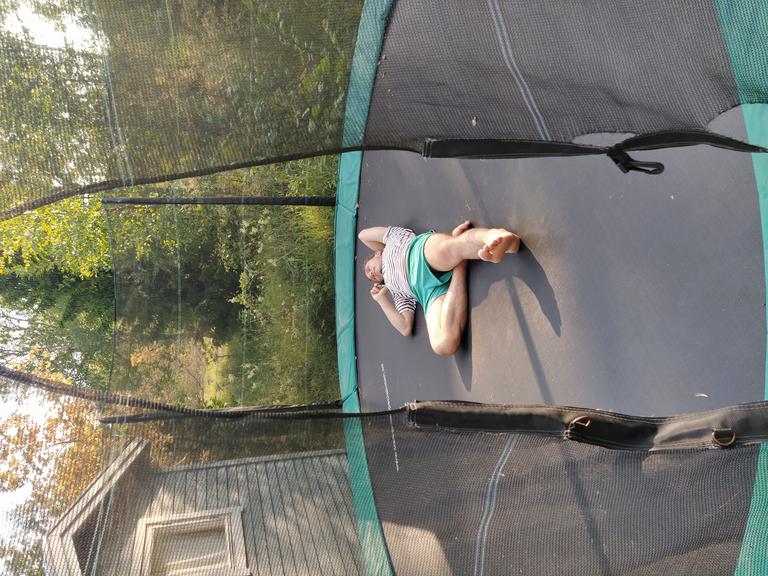
Alison bagged the best bike I have ever seen in Herräng. The bike shop is organised by the Camp, and their stock of bikes, used for only four weeks each year, is notoriously... second-hand. But Alison somehow got there early enough to find a mountain bike of the right size with front and back suspension, working brakes, a comfortable saddle and dozens of working gears. This proved perfect for the daily commute through the woods. I also found a mountain bike of the right size with working brakes and enough gears, though the gear shifter was so stiff I got a blister by the end of the week. The others mostly went for road bikes.
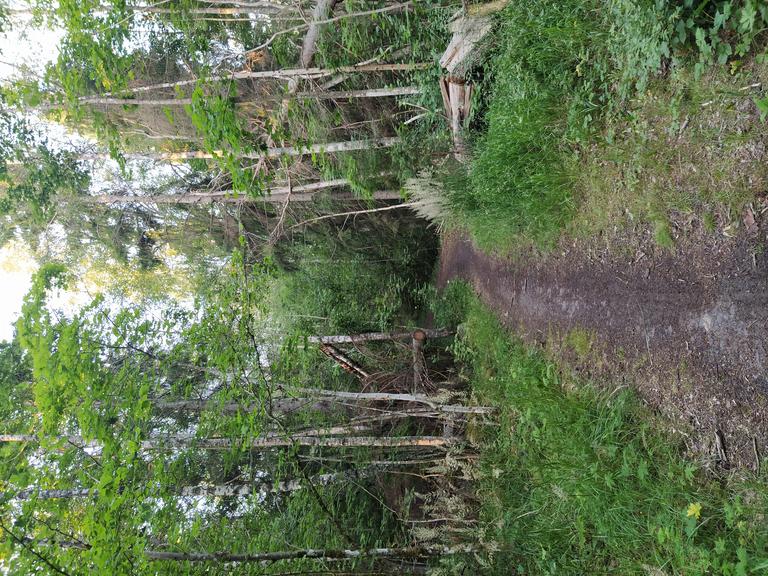
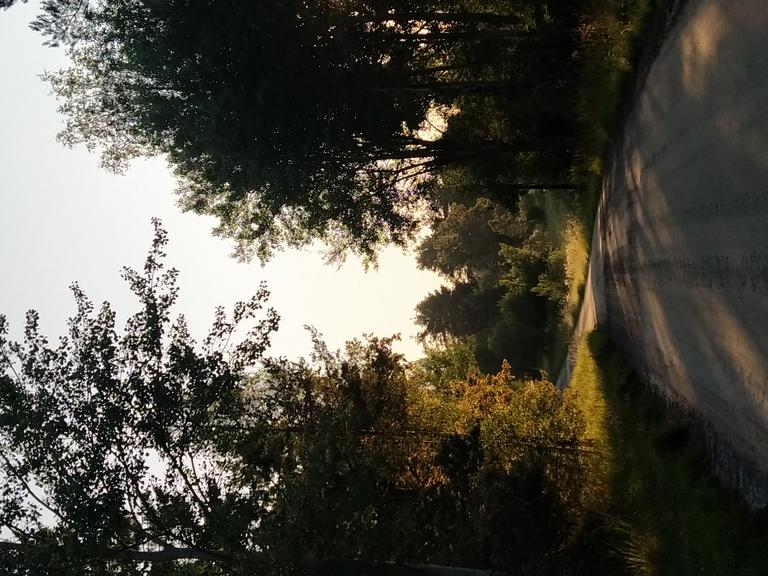
I spent an hour of the first evening riding in random directions from the house to see what was nearby. Mostly I found dead ends leading to summer houses. I did find a beautiful small harbour. By connecting with a place I had visited two years earlier, I found a path through the woods that proved to be the quickest route to and from class. We later discovered that the same path was recommended in the house's instruction manual. The route by road was slightly longer, but preferable in the dark, and easier to navigate. Ania found a nearby beach, though people generally chose to swim at the Secret Lake (I'm not much of a swimmer).
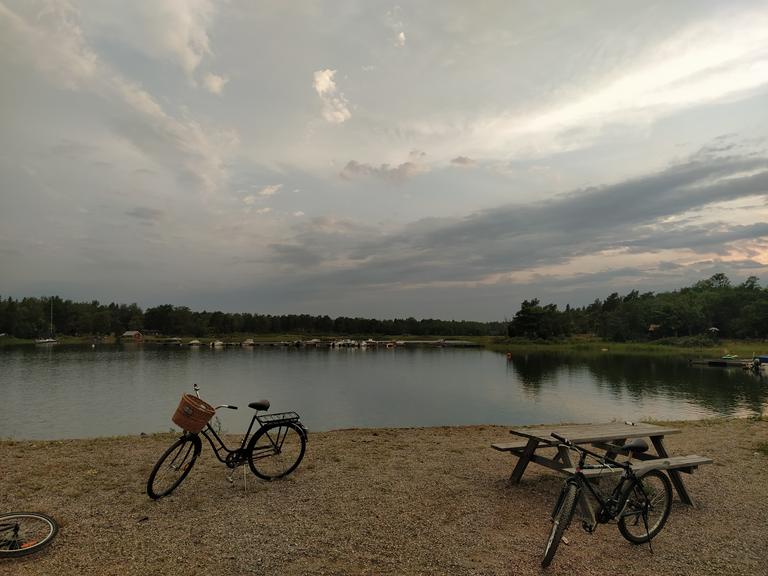
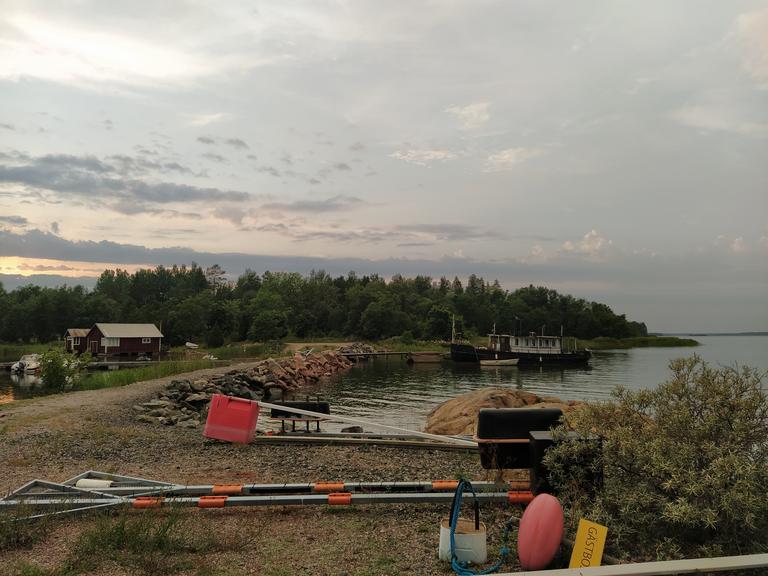
Ania, Patrick and Ianthe left at the end of week 2, but Alison, Alan and I stayed for week 3, all in different places. Alison kept her bike, rented a room in Hensvik, and swam in the lake every morning. Alan borrowed a tent, stayed on site, and took a job in Café Blue Moon. I stayed in Birgitta's house in Herräng.
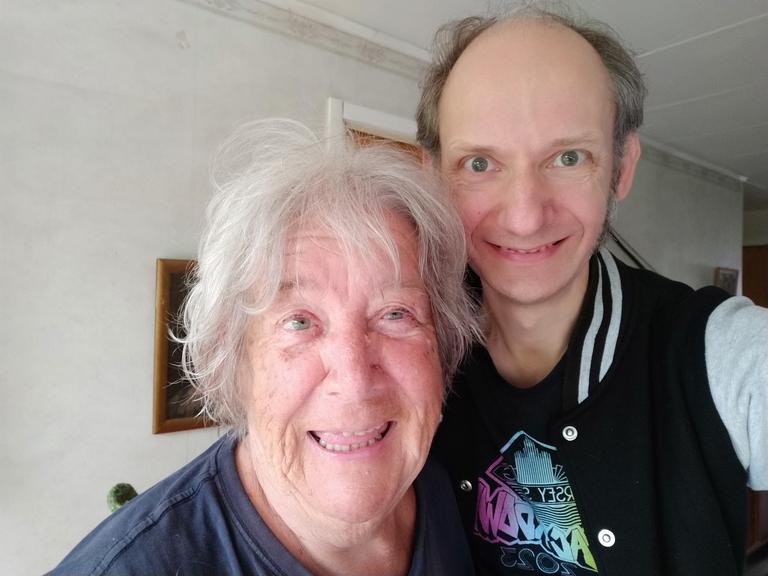
Balboa classes
The Balboa class in Herräng is great. We had fifteen classes of 70 minutes each, from four different teacher couples. All the teachers were great, but for my money the highlights were the historians:
-
Sylvia Sykes "Nobody gets to tell you what to do in your social dancing; if they did, it would be me."
-
Peter Loggins Put a coin in the slot and Peter will talk about dance history for hours, and back it up with personal anecdotes about meeting the original dancers. I would believe almost anything he says.
-
Bobby White whose documentary work I have linked to many times.
When one of these guys says "We don't know" it means We: the human race. I absolutely love that level of confidence and authority, but blink and you'll miss it. Such a treat to be taught by these guys.
In addition we had a talk from Sugar Sullivan and Barbara Billups: aged Savoy Ballroom dancers from the 1950s. They mostly talked about how they got into the dance as teenagers. It's great to get a personal angle on what for most people is just an ancient black-and-white video clip without any perspective or context. It makes it real.

We had 10am starts most days, with a day off on Wednesday. A typical day would include a double class with one pair of teachers and a single class with another pair, in some order, with a break in between. All our classes were in the Folkets Hus ballroom (the best floor by far!) or in the Dance Barn around the back of the Folkets Hus (recently polished and rather good too).
It was a big class: maybe 70 people. We were the highest of three levels, and I would say that nearly everbody in our class had put themselves in the right level. The middle level was the most popular and was split in two to make room, so there were actually four parallel streams of Balboa classes going on around the Camp at the same time. The teachers work hard.
The class material was great level-appropriate stuff. We focused a lot on quality of movement, using all parts of our bodies, and on opportunities for expression, in addition to the usual stuff on connection, technique and repertoire. I have lots of videos to record it all. I will probably be digesting and practising it for the next year or so.
Tap Jam
A few years ago I was given responsibility for running the tap jam for a week when there were not many other tap dancers around. One of my tasks was to design a sign to advertise it: "Tap Jam every day at 7:30pm - Beginners be early!". I was pleased to see it is still in use, though I think it was crushed a bit in storage.
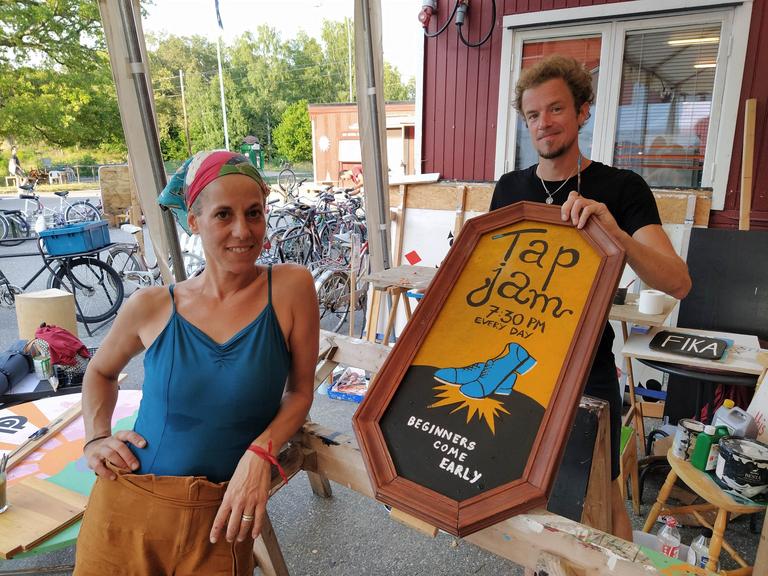
I turned up as usual on the first day this year, and again found that there were not many tap dancers around. Marco was there and had brought his music collection, and there were a few people who had noticed the sign, mostly without any experience and without tap shoes. But a nice thing about a jam session is that if people turn up it happens; that's the only requirement. So Marco and I began imparting our "wisdom" to the group.
(This video is actually from 2024).
After lots of errors, I feel I have finally worked out a formula for how to hold a jam that is suitable for beginners. The main criteria are:
-
Make it welcoming. If a beginner sees experts wordlessly taking turns to do amazing things, and then suddenly its their turn, that's pretty damn scary. It's important to establish reasonable expectations and goals, and to provide encouraging feedback. Beckoning spectators to join in helps to send the right message.
-
Make it social. Why come to a jam, instead of watching a video, or practising at home to recorded music? Because of the interactions with other people. Emphasise that aspect. Three examples:
-
This year there was a little tension between those who wanted it to be respectfully silent like a concert, and those who wanted to clap and whoop and join in. The Europeans vs the Americans, if you like. For beginners especially, I say clap and whoop.
-
There is always the question of whether to play recorded music in the background. I think the social option is to jam without music, other than what we make ourselves. But dancing without music is hard, and music is nice, so half-and-half is best. I started the jam without music, and ended with.
-
Transition from one solo to the next using a duet. The outgoing soloist invites somebody from the circle into the centre, plays around with them a bit, then cedes the floor.
-
-
Make it musical. This year I made it a group goal to keep the beat going, no matter what, even if you have to just stand still and count. This is a simple, achievable, social, inclusive goal with an immediate reward.
-
Teach a relevant move, then immediately use it in the jam as a break. The experienced dancers don't mind spending a few minutes teaching, and for the beginners it's a big plus. For example, one day I taught the 8-count TOBA break (the one in the Shim Sham). Then we did a jam where we alternated 8 counts of solo with the 8-count break; we took turns to do a solo and then we all did the break. The break sets the tempo, the 1, and the musical genre, demarcates people's turns, brings people back in when they get lost, and generally holds the whole thing together. Other example moves:
-
Simple time step.
-
f-lap ball-change, and shuffle ball-change.
-
Stomp offs and claps.
-
Cramp roll.
-
I invented an exercise in which the soloist does 8-counts, then repeats it, then the circle repeats it in unison, then everybody does a break. This ticks a lot of the boxes above: it is social, musical, welcoming and educational. It was quite a successful experiment, I thought, but it didn't catch on. Maybe it was too structured? I will probably try it again one day.
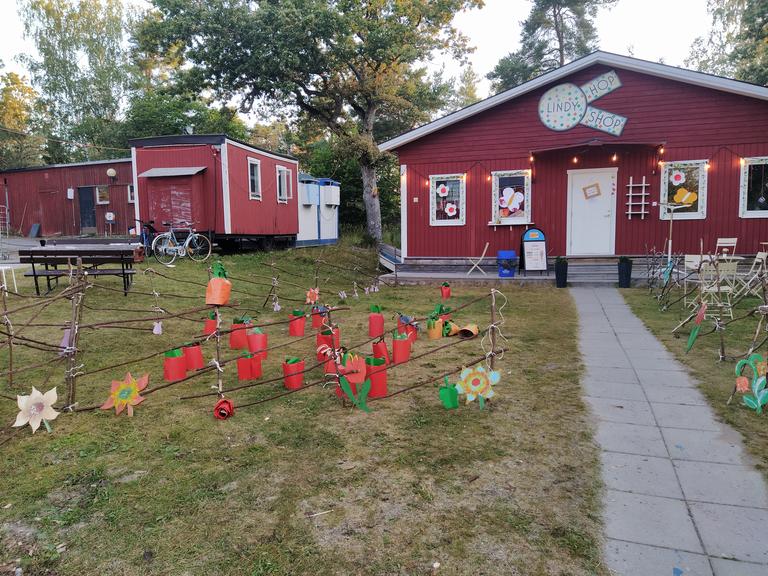
One thing I like about Herräng Dance Camp is that it is full of creative people who will try new ideas just to see what happens. This is the perfect attitude to make a jam session work. I saw some great dancing from people of all tap dancing levels, including the beginners with no tap shoes. They just drew on their other dance experience and made something up, and it was musical and deserved respect. And even the timid person who froze and counted out their first five solos got a big cheer when they finally did something. They came back the next day to try again.
After Marco and I had established the norms, and got the jam onto the official timetable so that nothing else would be scheduled to clash with it, a few more experienced tap dancers started coming, and I got tired from focusing on my Balboa classes, so we handed over the reins and allowed somebody with fresh energy and ideas to take the lead. I ended up attending about 2/3 of the jams over the two weeks I was there.
I have neglected my tap dancing a bit recently, so two weeks of fairly regular inspiration and practice made a big difference. I still frequently stumble and freeze when my feet don't make the sounds I expect, but I generally manage to fall back onto something basic that keeps the beat. I feel I benefited greatly from just watching what other people do, and whether it works or not. Learning good taste is a slow (but enjoyable) process which I think I am in the middle of, and will be for a while. And then of course I will need yet more practice. Tap dance is hard.
Here's somebody improvising at the pub night (not the tap jam) with a big audience:
Taster class
On my second day I volunteered by email to teach a taster class on "Tandem Charleston Variations, for Lindy Hop intermediate and above". They replied, giving me a slot on Wednesday in the tent known as Savoy Ballroom. Wednesday is the day off when nobody has other classes. Frankly, it is the best slot. It does not clash with anything else, and everybody including me is overflowing with unspent mojo.
I needed somebody to teach with. This is a secondary problem; I signed up first, and then went looking for a follow. In the worst-case scenario I would have just plucked a volunteer from the crowd; I've done that before quite successfully. But in the event my classmate Jenn from Houston bravely agreed to teach with me, and she was great.
We met up one hour before the class to plan. We made a playlist, practised the moves (all of which she knew), and discussed pedagogy and motivation. Then we grabbed water, went to the loo, helped another teaching couple with the amplifier and microphones, and took our places to await the students, playing a bit of music so people could warm up. Though nominally 10pm, the appointed hour is a little uncertain, as most people are coming from the Daily Meeting (unwisely renamed Variety Review this year), so we made sure not to start until at least some students arrived from there. And then we were off.
With 150 students! They could easily have made two circles around us, standing shoulder-to-shoulder. It could have been scary, but I loved it. Jenn tried to arrange some sensible but complicated way for people to change partners during the class, which was helpful, but honestly with that many people there's no real need for people to rotate partners strictly; best to just move on a few places and find somebody new.
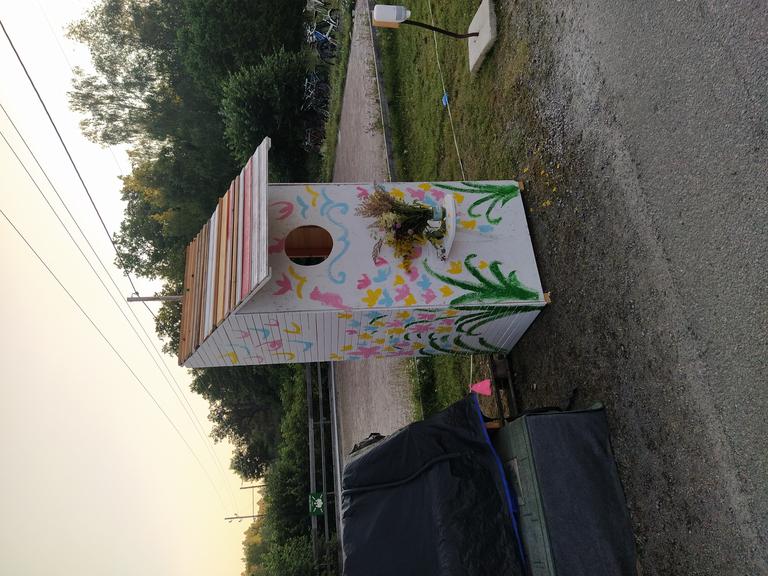
We had decided to spend the first few partner rotations on very easy moves: just side-by-side charleston at first. This gave some time for us to get the various volume levels right, for people to work out how to change partners, and for us to tell some jokes and establish some norms and rapport with the class. Good decision; do this. Do not underestimate the trivial difficulties of teaching in a foreign place and a foreign language, with no prior relationships.
We taught the tandem charleston basic, then the entrance and exit, and after about half an hour we were ready for our first variation. By this point we knew the class was very mixed level. A lot of people clearly already knew everything we had taught so far, but seemed to be enjoying it anyway, and we had spent some time helping a few people who were struggling. Both Jenn and I liked diving into the crowd during the practice intervals to help individuals; this is hard when there are 150 students but I think people appreciate it even if we don't manage to attend to them personally.
Our first variation was a push out. This is a move where you look at your partner briefly after an extended period of no eye contact, and in Cambridge we always make a joke of it, by trying to do something unexpected, e.g. thumb on nose. Not Jenn! She is a more elegant dancer and immediately countered with some more serious options to rescue her favourite dance from the clowns (me). That actually worked quite well. It got people laughing, encouraged individuality, and noticeably lifted the energy in the room.
After our third variation we found we were rapidly approaching 11pm, but a show of hands was overwhelmingly in favour of pushing on and finishing the planned material. We extended the class by about 15 minutes to teach shadow charleston, and were gently scolded by the tech team who have to enforce a noise limit in the village. So we stopped there, made a recap video, and went home just before the lights went out.
Lots of people came up and asked questions afterwards. Most people just wanted to say they had enjoyed the class. One person complained that they already knew all our variations and wanted to know some more, which we tried to provide. One person in particular said it was their favourite class of Herräng so far, which is no small compliment. So I think it was a success. And I did see people doing tandem charleston on the dance floor later in the week, but I have no idea if there was a causitive link.
I offered to teach more classes but was told there is a limit of one per week, and unfortunately I didn't get a slot in week 3. But it was a great experience, just like last year, and I will definitely be trying it again.
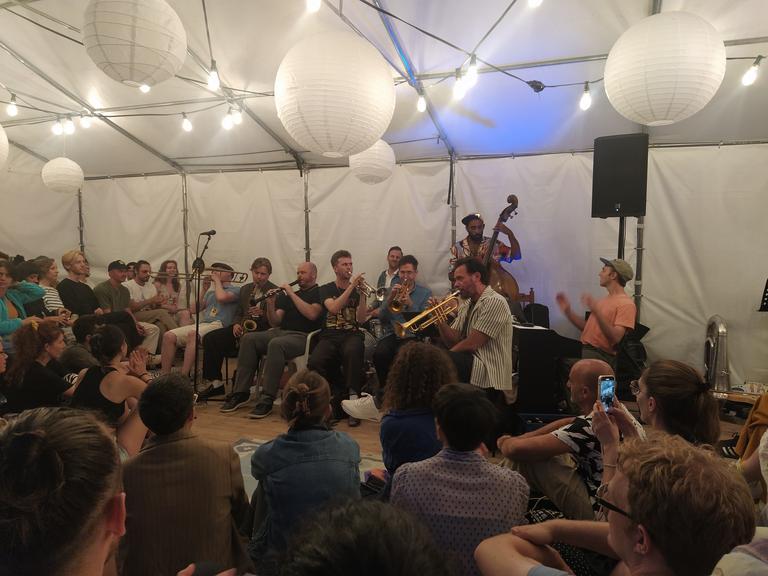
It took me years to understand, but I think these volunteered taster classes are a great feature of Herräng. It is good for the Camp, because it attracts people away from the crowded dance floors at the peak moment, and because three typically quite random classes in neigbouring tents makes for a wonderful buzzing atmosphere for anybody who happens to wander past. It is good for the students, who get a fun evening activity and some fresh ideas. It is especially good for inexperienced students, who might feel more comfortable with a lesson than a challenging crowded social dance. But it is really great for the teachers, who get a platform to try their luck and show their wares.
Personally I have no ambition to start a second career as an international dance teacher, but for those that do I can imagine it is a great way to build some recognition. For me it is a joy and an education to be allowed to try out my skills on 150 motivated students with diverse backgrounds. And it is good for my social life; I am finding that people come up to me years later to talk about a class I once taught, which is very satisfying.
Nature
Early in week 3, Alison and I spent a happy afternoon cycling to the northernmost point of the peninsula that contains Herräng, which turned out to be a nature reserve complete with a small lighthouse. It was a pleasant outing complete with a harbour, woodland paths both suitable and unsuitable for cycling, rock pools, reconnaisance for swimming, and no more than the requisite number of bicycle repair incidents.
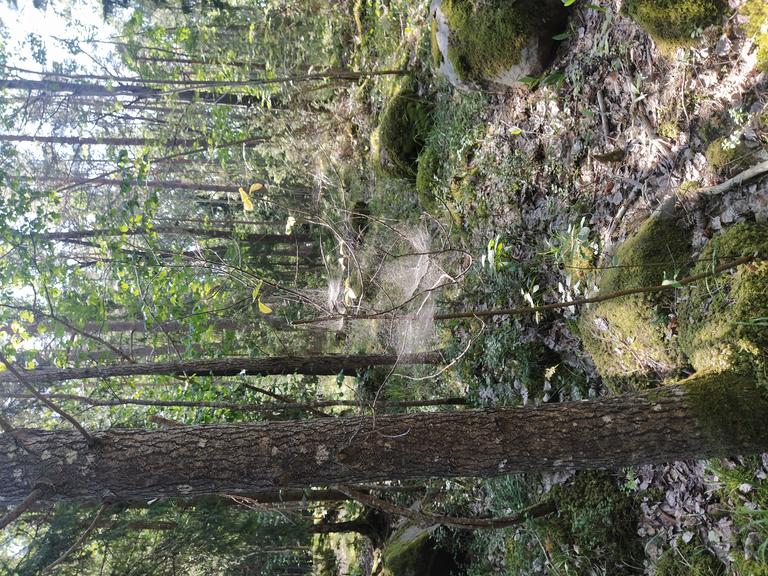
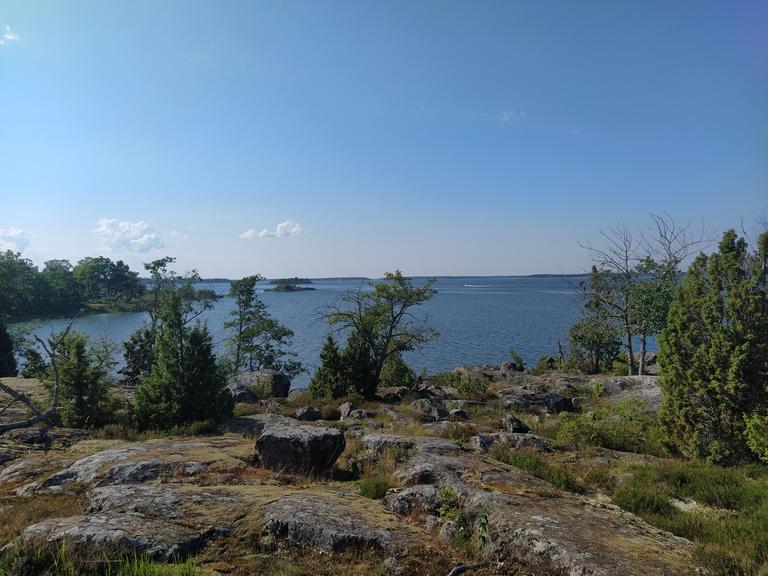
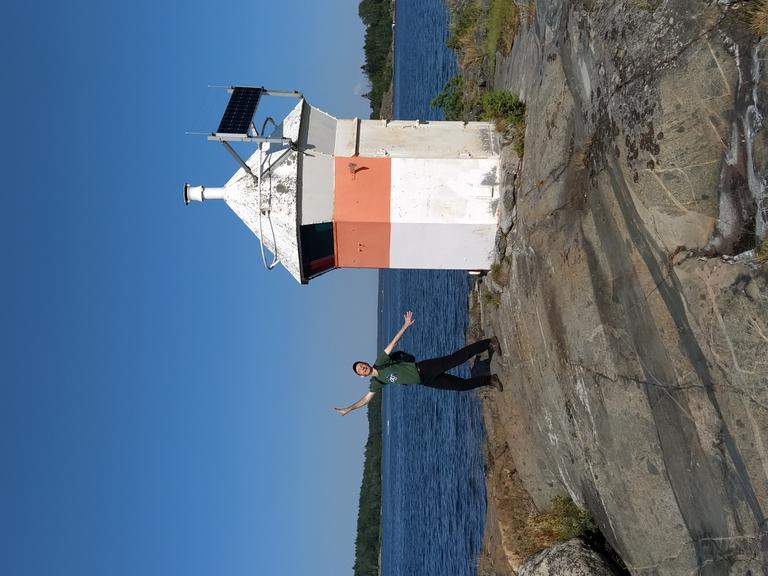
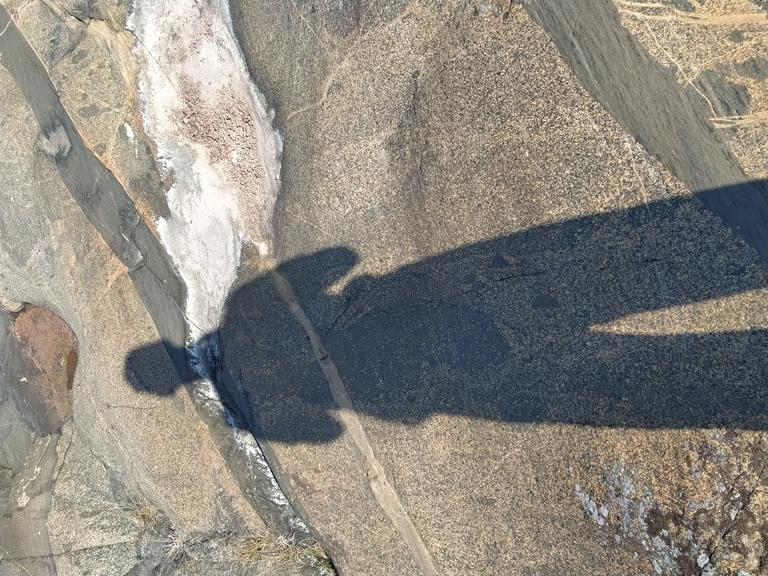

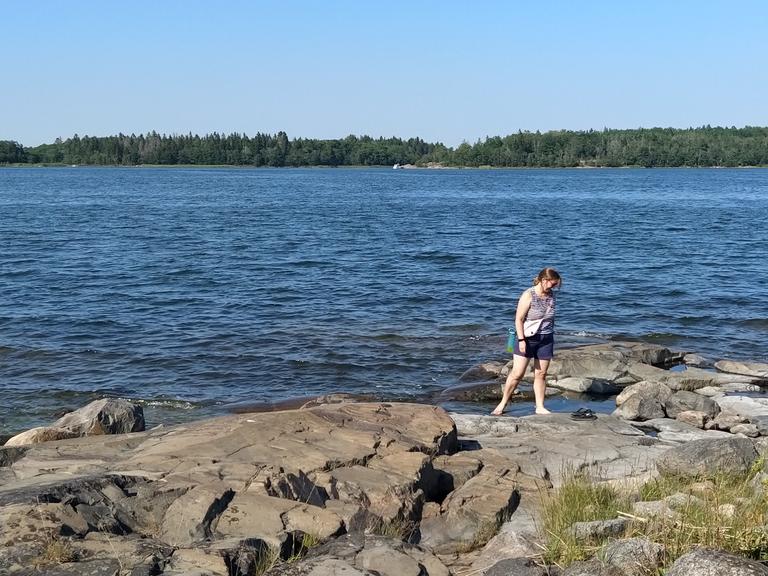

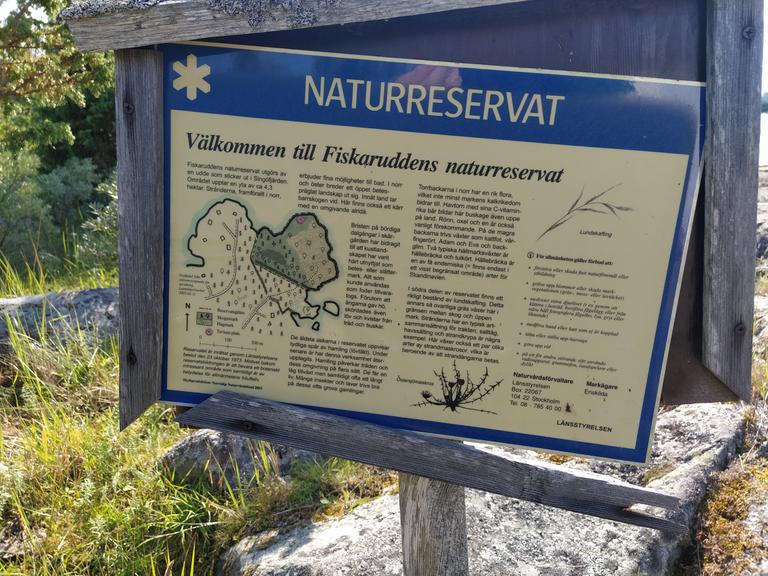
Food
Though probably quite uninteresting unless you are there, choosing the right place to eat in Herräng is strategically important. Dancing burns a lot of calories, and the food is not cheap. The food options in Herräng are different every year. I was quite satisfied this year.
For those with access to a fridge, the Kuggen supermarket remains the cheapest option. Birgitta frequently reminds me that the one down the road in Halstavik is much cheaper, but I never go that far just for shopping. In addition to bread, pickles, nuts and fruit, I bought various dairy products, which (along with fish) are the centre piece of swedish cuisine.
On the other side of the road, the fast food kiosk is the only restaurant that is open all year. It is under new management and now serves some asian food. There were always a few people eating there. I didn't try it.
Also next to the Kuggen the burger van was back. It only opens while the Camp is running. They use a shed in Birgitta's garden as a warehouse, and as Birgitta's frequent guest they know my name. The Thai food van was also there, serving expensive but delicious and healthy fast food in helpings large enough for two meals. They also know me. I ate at one of the two vans nearly every day.
Heavens Kitchen is the oldest Camp-run dining option. The difficulty of accommodating everybody's class timetables now makes it uneconomical for them to serve food at lunch time; instead you can buy sandwiches and cold meals from a fridge, which they call "Grab and Go". I never made it to breakfast or dinner, because I did not live nearby.
The Ice Cream Parlour is great for snacks and hot drinks. Though it does serve some sandwiches, its strength is social rather than nutritional. It has covered outdoor seating, and there is always an interesting conversation to join.
Inside the Folkets Hus, one finds Café Blue Moon upstairs and Bar Bedlam downstairs. These do open during the day time, but do most of their business at night during the social dances. Brownies in the café and nachos in the bar are established brand values of Herräng Dance Camp. The other menu items in the bar were overpriced this year, though the salad was a good resource to have.
The Marina restaurant survives on custom from the boaters, without any real competition. Apparently it would benefit from new management. I didn't visit it this year.
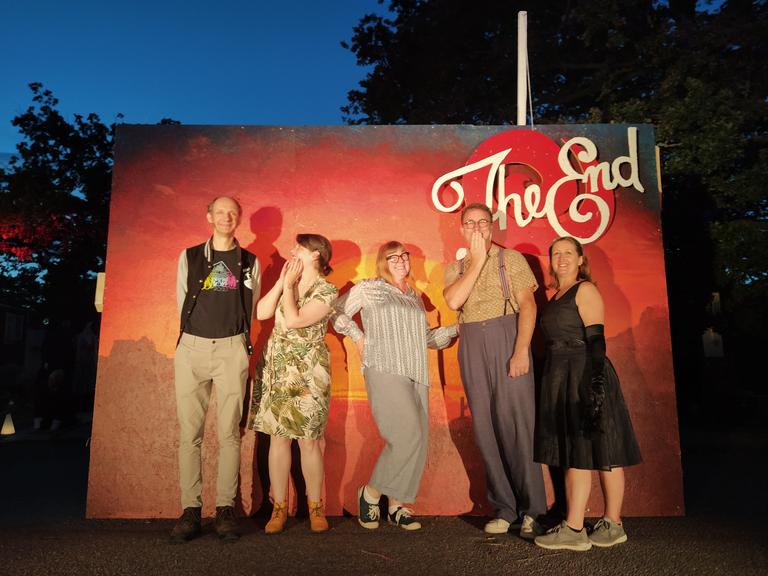

Last updated 2025/09/20